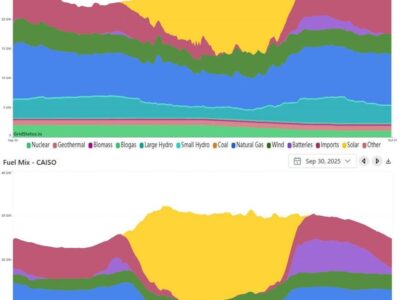How broad does Clean Water Act 401 certification sweep?
Recent disputes over infrastructure projects highlights the importance of the question
Another issue for ping-pong governance over the past few years has been certification under Section 401 of the Clean Water Act. For those of you who are not deep into the weeds of the Clean Water Act, Section 401 requires (a) federal agencies that are issuing licenses or permits that (b) result in discharges to waters of the United States to (c) receive a certification from the state the discharge is located within that (d) the discharge will not cause a violation of various provisions of the Clean Water Act.
The statute also requires federal agencies to comply with “any [state-imposed] effluent limitations and other limitations . . . necessary to assure that any applicant for a Federal license or permit will comply with any applicable effluent limitations and other limitations [under the Clean Water Act] . . . , and with any other appropriate requirement of State law set forth in such certification.” 33 USC 1341(d). The Supreme Court in PUD No. 1 of Jefferson County v. Washington Dep’t of Ecology interpreted this provision as authorizing a state condition on a federally licensed dam that regulated stream flows in order to maintain state water quality standards, even though stream flows are not covered by the Clean Water Act. (Stream flows are generally covered under state water law).
The question is how broad does the state power under Section 401 sweep. There are a range of options. At one end is the most restrictive: States can only impose conditions (and restrict certification) based on impacts to water quality that relate to the discharge at issue under the Clean Water Act. This was the position taken by the first Trump Administration in regulations it issued in 2020. This position could be reconciled with the outcome of PUD No. 1. In that case, the stream flows came from the output from the dam, which is a discharge. But the language in that opinion also states that Section 401 conditions can come from the project at issue (and indeed, that does seem to be more consistent with the statutory language, which refers to conditions to ensure that the “applicant” will comply with relevant law).
In between is the position that states can impose conditions based on impacts to water quality that relate to the activity that is causing the discharge – in other words, impacts from the activity need not result necessarily from the discharge itself, but from other components of the activity. This position is probably closest to the language in the PUD No. 1 opinion.
And at the other end is the position that states can impose conditions that relate to the activity that is causing the discharge – even if those conditions do not directly relate to impacts on water quality. There are some recent state Section 401 certification decisions that come close to this position – states relying for instance on the climate change impacts of natural gas pipelines as part of the rationale for denying Section 401 certification (although the states also generally relied on other conditions as well).
To give a sense of the difference in these three positions, consider a hypothetical that reflects a lot of the recent conflict. A gas pipeline will be constructed, and it requires a Section 404 permit under the Clean Water Act since the pipeline will go through a wetland, and that in turn will require deposit of fill material into the wetland. That deposit of fill is a “discharge” under the Clean Water Act, and it will have some local impacts on water quality (for instance, perhaps destroying a limited amount of wetlands). The narrowest version of Section 401 would only allow a state to impose conditions related to those impacts. The pipeline, however, will also result in grading and construction along many miles within the state, in areas where no Clean Water Act discharge would occur. That grading and construction will cause erosion that in turn will have impacts on water quality. Those impacts do not come from the discharge, but from the activity that produces the discharge. The middle version of Section 401 would allow consideration of those impacts. Finally, the gas pipeline would facilitate the combustion of fossil fuels, producing greenhouse gases that affect climate change. The broadest version of Section 401 would allow consideration of those impacts, which are primarily non-water quality related, but do result from the activity that produces the discharge.
The Problem Solvers Caucus proposal appears to endorse codifying the middle version of Section 401:
“Clarify that Clean Water Act Section 401 certifications by states should focus only on water quality impacts of the project that result from the federally permitted or licensed activity.”
Interestingly, that is basically the standard in the 2023 regulations promulgated by the Biden Administration:
121.3 Scope of certification. (a) When a certifying authority reviews a request for certification, the certifying authority shall evaluate whether the activity will comply with applicable water quality requirements. The certifying authority’s evaluation is limited to the water quality-related impacts from the activity subject to the Federal license or permit, including the activity’s construction and operation.
(b) Consistent with the scope of review identified in paragraph (a) of this section, a certifying authority shall include any conditions in a grant of certification necessary to assure that the activity will comply with applicable water quality requirements.
Note that this standard is broader than the first Trump Administration, but it is consistent with the Court’s opinion in PUD No. 1. And even more interestingly, the second Trump Administration has not come out with a proposal (yet) to revoke the 2023 regulations, but instead issued a notice stating that it is “initiat[ing] a series of stakeholder listening sessions and invite written feedback on regulatory uncertainty or implementation challenges associated with the Clean Water Act (CWA) section 401 certification process as defined in the 2023 Water Quality Certification Improvement Rule. The Agency will use this input to determine whether guidance or rulemaking are necessary to address identified areas of regulatory uncertainty or implementation challenges regarding the scope of certification.”
What is the right outcome here? I do think the “middle path” of Section 401 covering water-quality related impacts of the project would likely be upheld by the Supreme Court. It is not clear if the Court in PUD No. 1 reached the holding it did through analysis of the statutory text, or through deference to agency interpretation of the statute – the Court both did its own statutory interpretation, and then said that such a reading was consistent with EPA’s interpretation which was therefore reasonable and worthy of deference. It is plausible then that the decision in PUD No. 1 represents the “best reading” of the statute per the Court’s recent decision in Loper Bright, and an agency interpretation to the contrary would not receive deference. It is possible that the Court might disclaim the reasoning that was not necessary to reach the holding in PUD No. 1 as dicta, but I think that is unlikely.
And as a policy matter, this is perhaps the right outcome as well. For national infrastructure projects, we may only want to give states some say in terms of how they operate and what they do. Impacts on water quality is a focused, specific area to give states an important say in the projects – but expanding the scope of certification more broadly runs the risk of giving states veto power over any major infrastructure project. That principle has already produced real negative impacts in the context of electricity transmission – and while so far many of the fights over Section 401 have related to gas and oil pipelines being fought by politically progressive states, it does not take much imagination to see how the certification process could be weaponized against clean energy projects as well, especially under a President hostile to renewable energy…
So, if the 2023 regulations mostly get the policy right, and that policy is generally consistent with the relevant Supreme Court caselaw, is there anything for Congress to do? Perhaps. One key remaining uncertainty is what “any other appropriate requirement of State law” refers to. In PUD No. 1, the state water quality standards that were the basis of the state conditions had been previously approved by the federal EPA as part of setting water quality standards under the Clean Water Act. Is that a necessary condition for Section 401 certification – in which case, the scope would be somewhat narrower? Or is any state law that connects to water quality sufficient to fall within the scope of Section 401?
Other questions include whether we might want “safe harbors” declaring certain kinds of water quality impacts as de minimis, or specifying particular kinds of mitigation or conditions as adequate for certain kinds of low-level water quality impacts as a tool to reduce the use (and abuse) of Section 401 to stop larger projects that are locally unpopular. That perhaps could be done through the regulations. But it would have more permanence (and thus more effectiveness) if done through the statute. Again, as with other proposals by the Problem Solver Caucus, there is no details about what kinds of clarifications might advance the goal of “clarify[ing]” the scope of Section 401. There is more to be done here.






Reader Comments